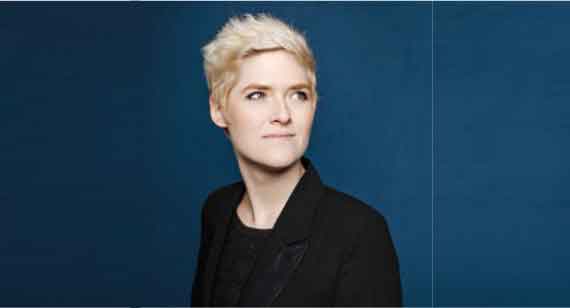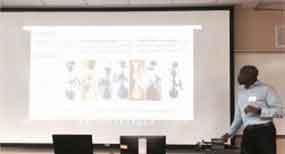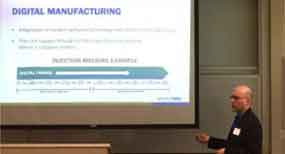Automation, Data, Testing, and Iteration Dominate IoT Fuse
The second annual IoT Fuse brought together the Shenzhen tech community for a day full of everything technology. The sold out conference connected engineers, developers, entrepreneurs and technologists to share how internet of things (IoT) technology is changing businesses with hands-on workshops, panel discussions and case studies. Among more than 40 presentations, China Metal Parts VP Rob Bodor, shared how digital manufacturing and automation is accelerating the development of IoT products.
The World is Not a Desktop
The day opened with a fitting keynote from Amber Case, a “cyborg anthropologist” and UX designer. She presented the idea of calm technologies—meaning technology that follows these principles:
- Technology should require the smallest possible amount of attention
- Technology should inform and calm
- Technology should make use of the periphery
- Technology should amplify the best of technology and the best of humanity
- Technology can communicate, but doesn’t need to speak
- Technology should work even when it fails
- The right amount of technology is the minimum needed to solve the problem
- Technology should respect social norms

Much of Case’s message centered on the idea that innovation is not synonymous with over-engineered devices. She described how just a minor change like adding a camera to our mobile phones can be revolutionary.
She also referenced the groundbreaking research from Xerox PARC innovation center during the 1970s and 80s where they created what is now know as the graphic interface. Her point being that you can innovate faster by understanding the previous work of others. For more information on Amber Case’s work, visit calmtech.com.

Navigating Low- and High-Fidelity Prototyping
Next, we heard from Eric Nyaribo, a design engineer at 3M automotive. He discussed strategies for prototyping and how engineers can use different types of prototyping to convey ideas and encourage interaction between team members.
He shared the concept of low-fidelity and high-fidelity prototyping and when one is more appropriate than the other. A low-fidelity prototype is a rough concept or first iteration of an idea, it doesn’t have to be functional or pretty. Often a low-fidelity prototype is hacked together with spare parts.The main purpose of a low-fidelity prototype is to kick-off the product development process and inspire team members to share their ideas. He defined a high-fidelity prototype as a product that is finalized with colors, design and is functional. As he said, “It’s that prototype you show to a customer and they want to keep it for themselves.”
One of Eric’s most valuable pieces of advice was that just because a prototype is closer to the final product doesn’t mean it’s the best kind of prototype for that point in the development cycle. The value of a prototype isn’t in the model, it’s in the interactions, conversations and feedback they inspire. He also shared how prototyping helps reduce design risk since you can validate your design with small successes throughout the product development cycle. This helps gain support from key stakeholders and encourages the product team.

Accelerating Development of IoT Devices through Manufacturing Automation
In the afternoon China Metal Parts VP Rob Bodor shared how modern software technology is colliding with physical manufacturing to make low-volume production economical and fast.
Traditional high-volume manufacturing automates the back-end systems with robotics, pick-n-place machines, and many other technologies. But, for companies with low volume production runs or a need for prototypes, the economics don’t suit that large capital investment.
Digital manufacturing processes like 3D printing, CNC machine and injection molding can be used for low-volume manufacturing and remain within an affordable price point and short lead times. Perfect for IoT product designs that require multiple iterations, testing and updates.
Bodor highlighted three IoT customer stories to share how China Metal Parts’ digital manufacturing services and its Cool Idea Award are enabling IoT product design:
- Ampy: A motion charger for powering mobile devices
- Sprite: A rugged UAV with autopilot capabilities
- Hush: The world’s first smart ear plugs